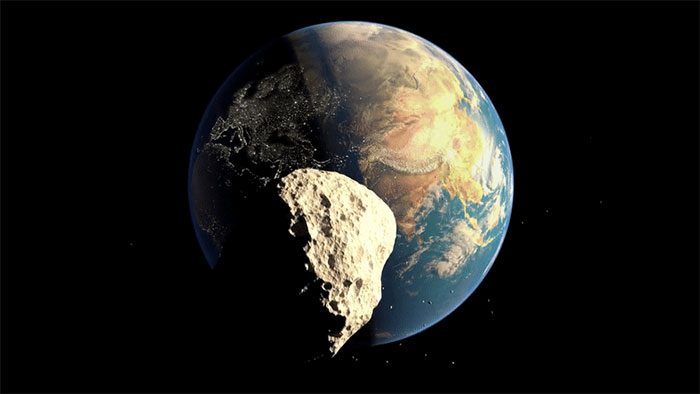The exercise took place from December 2020 and was coordinated by the International Asteroid Warning Network (IAWN) and NASA’s Planetary Defense Coordination Office (PDCO), involving 100 leading scientists from 18 countries. The results were recently announced by NASA and its partners in a study published in the Planetary Science Journal.

NASA and various space agencies around the world recently participated in an exercise focused on Apophis, one of the hazardous asteroids to Earth – (Photo: NASA)
According to SciTech Daily, Apophis was discovered in 2004 and has long been identified as having the potential for a significant impact on Earth in 2029. A threatening close approach was also forecasted to occur in December 2020.
Scientists utilized this close approach to conduct an exercise. The Minor Planet Center (MPC) – the agency responsible for tracking small celestial bodies – assumed Apophis as a surprise object to test the systematic response from space agencies and observatories worldwide.
Apophis first appeared on December 4, 2020, in the lens of the Catalina Sky Survey in Arizona, USA, funded by NASA. The Asteroid Terrestrial-impact Last Alert System (ATLAS) and the Pan-STARRS (Panoramic Survey Telescope and Rapid Response System) located in Hawaii immediately joined the effort thereafter.
When Apophis came into view of NEOWISE – a wide-field infrared space telescope from NASA – the MPC linked these observations with data from ground-based observatories to model the asteroid’s motion, which helped predict its trajectory during subsequent close approaches.
In March 2021, astronomers from NASA’s Jet Propulsion Laboratory (JPL) continued to use the 70-meter Goldstone Solar System Radar located in California to accurately measure the asteroid’s speed and distance.
This data will provide early and necessary warnings to intercept Apophis directly if it truly poses a high risk of colliding with Earth in 2029 or sooner, allowing us to initiate deflection campaigns in time.
Currently, NASA has a “test” spacecraft en route to crash into the “moon” of the asteroid Dimorphos as part of a planetary defense experiment, while China also plans to launch a similar spacecraft in the middle of this decade.
However, the exercise with Apophis brought unexpected good news. Data from dozens of space and ground-based telescopes, along with analysis from a team of over 100 scientists, confirmed that its risk is lower than previously estimated: Apophis will not pose a threat to Earth for at least the next 100 years.
Scientist Michael Kelley from the PDCO emphasized: “Seeing the planetary defense community come together during Apophis’s closest approach was impressive. Even during the pandemic, when many participants had to work remotely, we were still able to detect, track, and learn more about the potential threat effectively. The exercise was a success.”
While we have more time with Apophis, scientists remain cautious and continue to pursue research related to planetary defense, ready to prepare for unexpected threats. The likelihood of an asteroid similar to the one that caused the extinction of the dinosaurs striking Earth is low, but if it were to happen, we would not have a second chance.





















































